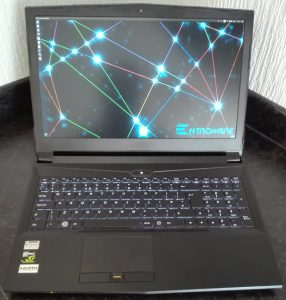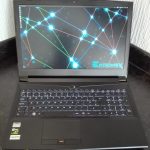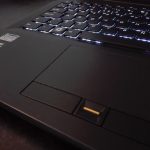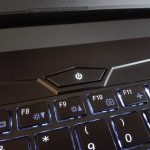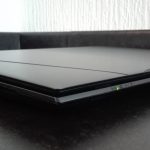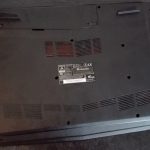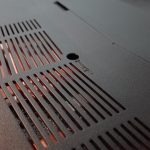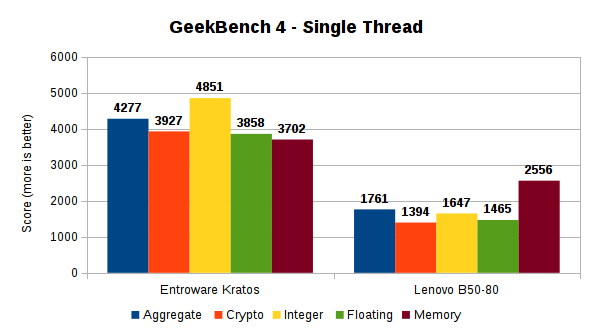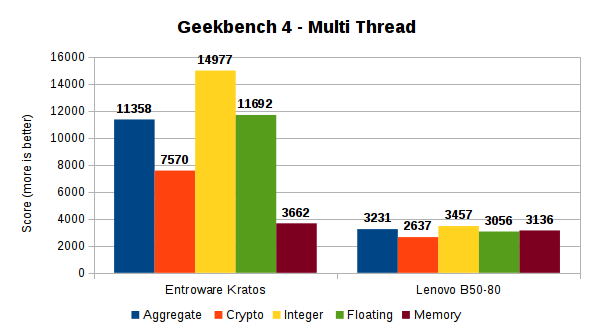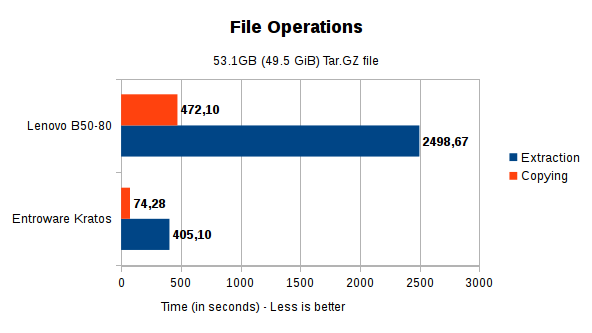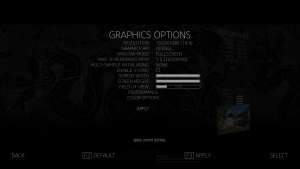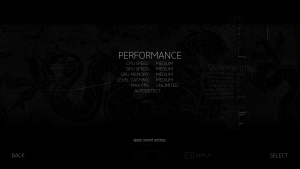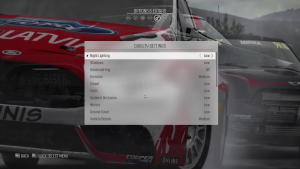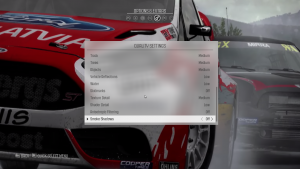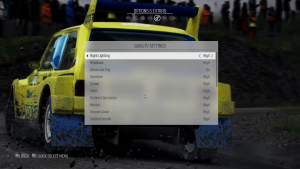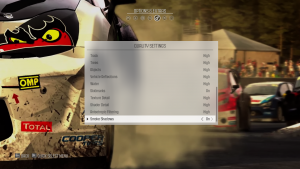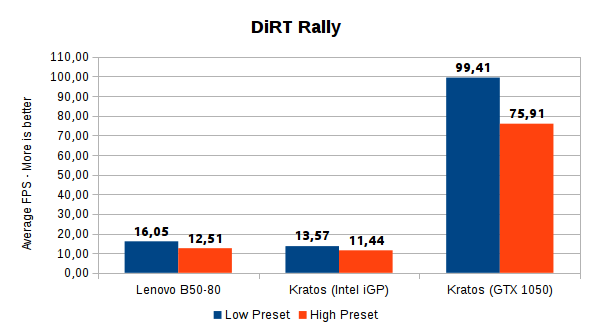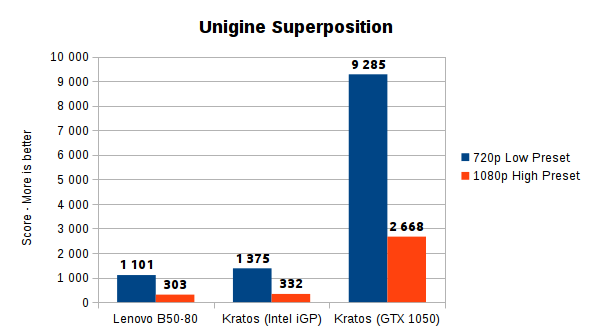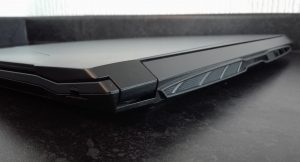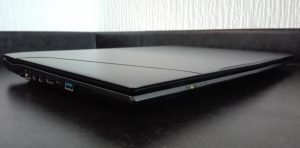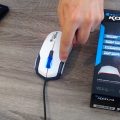Pedro spent a full week poking the Entroware Kratos with a stick. We eventually talked him into comparing it against his daily driver.
Index
- Introduction
- Specs & Pics
- CPU & Storage
- Vidjagames
- Synthetic GPU Benchmarks
- Battery, Noise, Price & Conclusion
- TL;DR & Final Thoughts
1. Introduction
Welcome to the very first L.G.C. Hardware Review! We don’t have a clever name for it yet but I’m sure Jordan will come up with one in no time. Since this is our first review, this section is going to include a general description of how the rest of it will be broken down. Should you, at any time, feel like I’ve cocked something up, used a tool you didn’t care for, found a typo, want to suggest a different tool or approach, have any hints, thoughts, allegations, things better left unsaid or disparaging remarks about my mother, take those comments and shove them in your pocket! Though if you do have legitimate feedback or criticism, I’m sure you’ll find a way to let me know.
This review will be broken up into several different sections. Each appropriately titled, so that should you not much care for my ramblings and just want a TL;DR or to look at the pretty graphics, you can do so. I guess I don’t really need to tell you what the introduction is all about, since you’re reading it and it’s pretty self-evident. The first section proper will include a general spec overview, some crappy phone pictures of the unit, and a critique of the outside, keyboard, touchpad and I/O ports; going forward, I suppose I will need a proper camera. The section after that will have the processor and storage benchmarks, namely Geekbench and some file copying/extracting to put the Kratos through its paces. The third section will have the gaming benchmarks, I’ve chosen DiRT Rally and The Talos Principle because not only will they allow me to compare the Kratos to my cheapo Lenovo laptop, they’re very distinct in where the bottleneck in those engines lies and, in the case of Talos specifically, the difference between Vulkan and OpenGL performance. The section after will have the synthetic GPU benchmarks with both Unigine Heaven 4.0 and Unigine Superposition 1.0, the former being an old favorite all over the interwebs and the latter its newfangled descendant. Any errata or methodology explanation for these benchmarks will be detailed on those very sections. The second to last section will have the battery life and noise level tests as well as an “objective” conclusion. The very last section is the one you’re looking for if you just want the aforementioned TL;DR and want to know my subjective feelings towards the Kratos. Again, this is our first review and since we don’t have any other reviewed laptops in our backlog to compare the Kratos to, I’m going to compare it to my cheapo Lenovo laptop in all the benchmarks and tests. And before I hear any bitching about different distros, both were running Ubuntu 17.04 as up-to-date as possible on August 1st, 2017.
So with that rambling preamble out of the way, let’s get into what we’re here for.
2. Specs & Pics
The Kratos is in essence a high end laptop which Entroware seem really keen on promoting as a gaming laptop. Regardless of my opinion about the term “gaming laptop” at this point, I am very much inclined to agree with the general sentiment behind that. It has a dedicated GeForce GTX 1050 GPU paired with an Intel Core i5 7300HQ, 8GB of DDR4, and an 256GB NVMe Samsung SSD; if that doesn’t count as a gaming laptop, I don’t know what do-… It doesn’t have RGB LEDs and YOLOSWAG design patterns. Gaming status revoked!!1!
In all seriousness, I absolutely love the fact the fact the Kratos is very subtle in its unassuming, all back exterior. The only LEDs in this laptop are the ones providing backlighting for the screen, keyboard, power button and the front facing activity/status ones. This subtlety is definitely a plus for me. Two paragraphs in and we’re already in the positive, if you want to keep score.
Here are the specs:
| CPU | Intel Core i5 7300HQ 2.5GHz | Sound Card | Sound Blaster Cinema 3 |
| I. GPU | Intel HD 630 | Battery | Lithium Ion, 6 Cell – 60 Whr |
| D. GPU | GeForce GTX 1050 4GB | I/O Ports | Separate Headphone and Mic jacks |
| RAM | 8GB DDR4 2400MHz | 2x USB 3.0; 1x USB 2.0; 1x USB 3.1 Type C | |
| SSD | Samsung SM961 NVMe 256GB | 1x HDMI; 2x Mini DisplayPort (Daisychainable) | |
| Display | 1920×1080 IPS, LED Backlit | 1x Ethernet; 1x SD/MMC slot; 1x Kensington Lock | |
Before we go to the pretty (not really) pictures, I do have feel like I have to at least talk about the rest of the outer bits of the Kratos. Outside of the Power button, there are no buttons beyond the Keyboard and Touchpad. Maybe it’s the review unit I got, which Entroware did say had some minor blemishes from other reviewers, but the Power Button is finicky. You need to press it at a certain angle and with non-negligible force for the laptop to turn on. I honestly don’t know what’s up with that!
The keyboard has those same chiclet style keys that every other mainstream laptop and their cat have, nowadays. I don’t know who it was that though chiclet keys were awesome, but I fucking hate the damn things. That is probably the strongest negative opinion I have regarding the Kratos and it’s not exactly its or Entroware’s fault. This negativity is somewhat ameliorated by the backlit keys and the fact you can adjust the intensity of the backlight.
Right below the godawful keyboard, you have the touchpad which would be completely unremarkable if not for two things. The first is that it has a very good sensitivity threshold and will effortlessly pick up on slow, small, and precise movements you make with your fingers. The second is what I can only assume to be a fingerprint reader, because it didn’t come set up out of the box and I couldn’t figure out how to get it working in the week I had the laptop with me.
3. CPU & Storage
In my not so humble opinion, CPU and storage are often the single most important components of a laptop, with battery following as a close second. And if you must know, chassis and noise coming immediately after battery, but I will expand on that come time for final thoughts.
CPU
The processor, then. The Kratos, or at least the unit I was sent, comes equipped with the Kabylake Intel Core i5 7300HQ. It comes clocked at 2.5GHz with a maximum Turbo clock of 3.5GHz. It’s a quad-core, non-hyperthreaded part, as are many of its desktop counterparts. And that last one is the big kicker, this is a true quad core laptop!
The i5 line is nowadays the undisputed king of the “gaming” processors. Without hyper-threading to split the cores, IPC (single-threaded) performance is the best you can get for each clock cycle. And since games still tend to come optimized for single-threadedness, especially on Linux (Feral!), rather than accounting for multi-threaded processors, often 4 or more of the fuckers, performance is still better in pure gaming scenarios if you have an i5 processor. Yes, Vulkan will change this but fact of the matter is, there aren’t too many Vulkan games out there yet and Feral’s Vulkan ports are still unsurprisingly bottleneck to hell on the CPU. So, what I said still stands.
Let’s get our methodology out of the way so that we may start with them graphs:
For the CPU tests I used the free ”tryout” version of Geekbench 4. Which made things interesting, since it needs an active internet connection to even show me the results, seeing as I still didn’t have a fixed internet connection at my place. Going forward, should you readers think these are interesting numbers we will invest some wet stinkies to make it official. There was no errata to speak of here.
All the numbers you see are arithmetic average of three passes, plugged in to the AC, performance CPU scheduler, and being connected to a Wi-Fi network.
Nothing out of the ordinary to report, here. As expected the quad-core i5 7300HQ curbs the i3 4005U. If it hadn’t, I guess Intel would have had some ‘splaining to do when it came to Kabylake performance. Onwards, then!
Storage
This is where opinions diverge. Do you prefer speed or space? Your answer to this question will dictate whether or not you will agree with me come time to give my final two cents on the Kratos, as reviewed.
This laptop came to me with an M.2 Samsung Polaris SM961 NVMe 256GB SSD and no other internal Storage, which is a configuration you can’t get from Entroware’s online store. I did send Entroware an email to ask why not and they said that, since everyone knows how slow HDDs can be, review units they sent out only had the SSDs in order to show off the best possible performance. While I’d have preferred to have received a unit with specs that matched a commonly available configuration, I can understand their reasoning to some degree.
As the numbers will show, there is very clearly a difference between the Samsung 750EVO SATA SSD in my Lenovo B50-80 and the Samsung SM961 M.2 NVMe SSD in the Kratos. Samsung claims the 750 EVO can push 540MB/s and 520MB/s in sequential reads and writes, respectively. Not too shabby for a SATA SSD! But Samsung also claims the Polaris SM961 M.2 NVMe SSD in the Kratos can do 3’100MB/s and 1’400MB/s in sequential reads and rights, respectively. I think you already know where this is going.
The one bit of possible errata here is the fact that, while my Lenovo B50-80 only has an i3 4005U at 1.6GHz, the i5 7300HQ on the Kratos is considerably more powerful and this could introduce some discrepancy in the tested speeds. Which may not even be relevant since I’m comparing apples to oranges when it comes to my laptop with SATA SSD and the Kratos with an M.2 NVMe SSD.
As a reminder, these numbers are the averages of three measurements for each test, the laptops were plugged in and their processors were set to the performance scheduler. Nothing else of significance was running outside of tar for the extraction and cp for the copying.
Once again, the Kratos mops the floor with my Lenovo. And yes, in case you’re wondering, it took my Lenovo over 40 minutes to extract that 53GB file every single time. I knew benchmarking was a time consuming process but damn, son! It also took longer to copy that same file to another location on the same SSD, than it took the Kratos to extract it. If there were any doubts left in my mind regarding the performance differences between M.2 and SATA SSDs, they’re gone now.
4. Vidjagames
Well, this is where the word Game from Linux Game Cast comes in.
So, as I mentioned at the start, I picked The Talos Principle and DiRT Rally for my gaming benchmarks for several reasons: Both games run on the Kratos, regardless GPU, and my Lenovo; Both games have Benchmarking tools built in; Both offer log files with a bit more detail than just the high/low/average FerPS; And while DiRT Rally being a Feral port and all is bottlenecked on the processor, though not as much as some of their other ports *cough*Shadow of Mordor*cough*, Talos provides a good example of a game which works really well in both OpenGL, with minor CPU bottleneck, and Vulkan, where the bottleneck is on the GPU unless you don’t have the CPU cores to push the graphics card to 100%.
Yes, you incredulous Intel owners! There is a thread on the forums for this very website with The Talos Principle benchmarks where you can see my FX 8370E and GTX 970 outperforming Jordan’s i7 6700K and GTX 980.<put links here>
That is just a the tip of the Vulkan iceberg, game developers! If you’re starting to develop your game now, use Vulkan.
Let’s talk errata, here. My Lenovo has a 1366×768 panel and, while I could have run the tests at that resolution on the Kratos as well, I chose to run them all at 1080p. I used one of my desktop PC monitors, Asus VX239H-W, to run the tests on the Lenovo.
The methodology is similar to previous tests, average of three passes with the laptops plugged in. The two GPUs in the Kratos are shown in different bar clusters in the graphs to make reading much simpler.
The Talos Principle
Settings: Medium Preset
DiRT Rally
Settings:
Low Preset
High Preset
As you can see from both these games, something is off from the results between the Kratos with the integrated Intel GPU and my cheapo laptop with it’s much older, supposedly much weaker, Intel GPU. The HD 4400 even managed to edge out the newer HD 630 in DiRT Rally while matching the Vulkan results in Talos. It could very well be that the graphics drivers for the Kabylake iGP aren’t really “there” yet but the only way I’d have to be sure is to through another laptop, from a different generation, into the mix. Since I didn’t have one kicking around, it’s up to you dear readers to do some validation checks.
5. Synthetic GPU Benchmarks
It’s our pal the Unigine game benchmarking engine! I can already hear the developers of Oil Rush and Cradle going apeshit, but fact of the matter is, neither of those games was very good. And Cradle defaulted to WASD only movement and wouldn’t let people change the controls so, as far as I’m concerned, it can eat the proverbial bag of dicks. Not that there’s anything wrong with that, I’d just respect the developers a lot more if they did.
But before I alienate even more people, let’s keep going.
Unigine Heaven 4 should by now be ubiquitous if you’re someone who looks at hardware reviews online. We ourselves have had a long, long history of using this same benchmark for the unofficial “benching” threads in the forums. For this test, I’ve run it using the just the presets, so that you may easily replicate these tests for yourself if you want. Same methodology and errata from the games apply here.
But now we have a new benchmark. One which, at some point in the future according to the Unigine devs, will feature Vulkan benchmarking as well. So I’m getting in early on the inevitable adoption of Superposition by every outlet and their dog. Well… I don’t entirely know if other outlets will pick up on it, but I do like it and will be using for all our hardware reviews, however interspersed they may be.
One bit of errata to add to this one is that, the internal display panel of the Kratos can’t do 720p natively, as such Superposition would crash the moment it starts. My work around was to plug the Kratos in to the very same monitor which I used for the Lenovo and run the 720p Low benchmarks on the external display instead.
6. Battery, Noise, Price & Conclusion
Battery
The Kratos has a big battery. We’re talking 6-Cell, 60Whr, Lithium Ion battery. While it’s arguable as whether or not you need a battery that big in a “gaming laptop”, the Kratos does and it just adds more fuel for an argument I’ll make which will dispute this particular machine’s status as one of those.
But I’ll save that for later, now let’s talk about what “Gaming”, “Productive” and “Idle” mean on the table below.
“Gaming” should be self-evident, though I will add that I tried to make this the worst possible scenario: 100% screen brightness, 100% keyboard backlighting, 75% sound volume coming through the speakers, using the GTX 1050 on the Kratos and playing none other than DiRT Rally on the High preset.
“Productive” is what I dubbed writing this review in Open Orifice, using only the iGP, at 50% screen brightness, 20% keyboard backligting, 50% volume with earbuds playing some music in the back, having two terminal windows open one with powertop and the other running watch sensors, and occasionally browsing the web over Wi-Fi for the purposes of fact checking this review and, of course, procrastinating.
“Idle” is exactly that, I left the computer idle from 100% battery until it went into hibernation (5%), using only the iGP, 50% screen brightness, no keyboard backlight, Wi-Fi and Bluetooth disabled.
These results don’t include my Lenovo because they work rather well on their own and if I’m being honest, my Lenovo’s battery is already down to 90% of its original capacity.
Idle | Productive | Gaming |
7h31m09s | 4h28m43s | 56m37s |
Noise
I saved this for after the battery test so I could put it into context. And I’m going to need context because while I did try several different Decibel Meter apps, and tried them on both my phones and my SHIELD Tablet, I couldn’t get coherent readings. So, grab a bag of rock salt and take a big ol’ grain because I’m going to give you my own subjective noise opinion for the Kratos. Should any of you have any suggestions on how to get proper noise levels out of some app or another, I’ll gladly start doing that for future reviews.
With my excuses out of the way, I can tell you that the Kratos is actually a very quiet laptop. Assuming you’re not playing any games or using the processor in any significant fashion. While doing the “Productive” test above, I never once heard the fan on the Kratos kick in. I could tell it was working because if I moved my hand to the right exhaust I could feel the slightly warmer air coming out but, as far as my ear holes were concerned, I couldn’t really hear it. That’s a good thing and I need everyone to remember that going into the next paragraph.
During the Gaming test however, damn! Damn, that’s loud! Loud enough I had to put on my noise cancelling headphones listening to some music coming from desktop PC, because even DiRT’s game sounds coming out of the Kratos’ speakers at 75% volume couldn’t fully drown out the whirring fan. And with laptop fans having to be thin to fit in the enclosure, you’re going to hear them even more! I ran stress on both the Kratos and my Lenovo just to see how which was louder and the Kratos wins that one, as well.
Price & Conclusion
“Finally, time to bow on it and call it a da- wait… Why do I see more stuff below this section?!” – Well… I’m going to separate the conclusion from my final thoughts and provide a little TL;DR for those people. I decided to make the conclusion and final thoughts different because this way I can be as objective as possible with the test results you and give you the reader a recommendation (or not) of the hardware in question here, while the final thoughts will be more esoteric. Specifically, for the people like me who enjoy tinkering with their boxes and the hardware manufacturer/distributor, or simply the people who sent us the stuff. All clear? Cool!
Price as Reviewed: £929.97*
*Since you can’t specifically get this configuration, I kept the 500GB HDD in the configurator and simply added the 256GB M.2 NVMe SSD.
Cool is definitely a word I would have no issues using to describe the Kratos, in its unassuming all black exterior, comprehensive number of ports, beautiful screen and powerful hardware. It’s not cheap, but it is certainly very cool. And if I stop trying to be coy I can even tell you that, while Entroware seems to be gearing the Kratos for the “gaming laptop” crowd, I would have no issues using it outside. Granted, there are some aggressive lines and sleek designs, but they pale in comparison to other such “gaming” laptops and that is a good thing, if you ask me. The specs our review unit came with certainly make the argument that yes, you can use the Kratos for gaming but as someone who plays a lot of games I know how bad a laptop is for playing games. The price/performance ratio is always going to be worse when compared to a desktop PC, the battery life is always going to be worse than other non-gaming laptops, it’s most likely going to be louder and call much more unwanted attention than those other options as well.
I often actively don’t recommend gaming laptops to people and if you think the Kratos is a gaming laptop, you shouldn’t buy it. But if you’ve read what I’ve written so far, seen the benchmark results and thought to yourself “This is an awesome workstation/desktop replacement laptop for not too much money and enough humpf to do some gaming, should the need arise”, then congratulations. You’ve arrived at the same conclusion I have.
I will actively recommend the Kratos to college students looking for what will be their sole source of electronic entertainment for their foreseeable future, discounting sex toys of course. I will also recommend the Kratos to graphical or visual designers, who need not just the processor and some GPU to help them but a proper IPS 1080p screen. And finally, I will recommend the Kratos to you, dear reader, if you want a good all around laptop and don’t particularly mind any of the shortcomings you’ve seen.
TL;DR
| Good | Bad |
| 1080p 15.6 IPS screen | Loud fan |
| GTX 1050 which will play most games just fine | Poor battery life |
| True Quad-Core CPU, rather than 2 core HT | Lack of service access door for upgrades |
| M.2 SSD makes this laptop very fast | Came with the Unity DE |
| Ubuntu MATE is an option | Chiclet-style keyboard |
| Subtle and unassuming exterior | – |
Don’t know about you, but that to me seems to be more goods than bads. Unlike my English, which seems to be getting more bad as time goes by.
7. Final Thoughts
This is it, this time for real!
The Kratos as it comes to you is great. Even with this Optimus configuration, the issue of getting both the iGP for battery saving and the dedicated GPU for performance isn’t posed. Granted, by default you have to log out and back in to switch between GPUs but that is to be expected, since none of the current “on-the-fly” switches work to a good enough degree to be shipped in a commercial product. We can go around pointing fingers as to who is to blame, suffice it to say Linus Torvalds did give the most likely culprit the bird, but this doesn’t excuse Entroware from all fault. No no.
While Entroware for their part did a very good job in preloading Ubuntu 17.04 and making it a truly spot on out of the box experience, even on an Optimus laptop, they made one mistake. They sent me a Kratos loaded with Unity. Unity! That DE so good even Canonical couldn’t pretend to care or even believe in it, with their IPO right around the corner. If you want to test someone’s belief in their product, put the prospect of serious money on the line and watch them. There’s a reason I didn’t bring this up in the conclusion and it’s that I’m biased. I’m actively biased against Unity, because from the start I thought it was a bad idea and a waste of time and money. And to be handed a laptop loaded with that historic piece of software trash, when the people behind it have already moved on as well, that’s just bad. Bad Entroware! *smacks with newspaper*
Honestly even without my bias towards it and Martin Wimpress, and the GTX 1080 he bought me, MATE is the better option at this point. It offers far greater customization options and you can actually theme it properly without having to install a third party tool on top of the third party themes. It gives you much more granular control over your desktop and how it behaves, still less than KDE but miles better than Unity or GNOME 3. If I’m being perfectly honest, I would have preferred if the Kratos came with Solus and it’s unofficial KDE desktop installed. Since that’s not likely to happen at this point, just make Ubuntu MATE the default. Entroware! Theme it nicely like the competition did, so that it looks “modern” and other meaningless terms used to describe other desktop environments. If you are going to ignore everything I’ve praised about the Kratos and focus solely on one negative thing to improve, get rid of Unity.
That’s it, that’s all I have. WordPress says I’ve crossed the 4’000 word count, so next time I’ll have to be a bit more concise.
It’s a good laptop, though.

